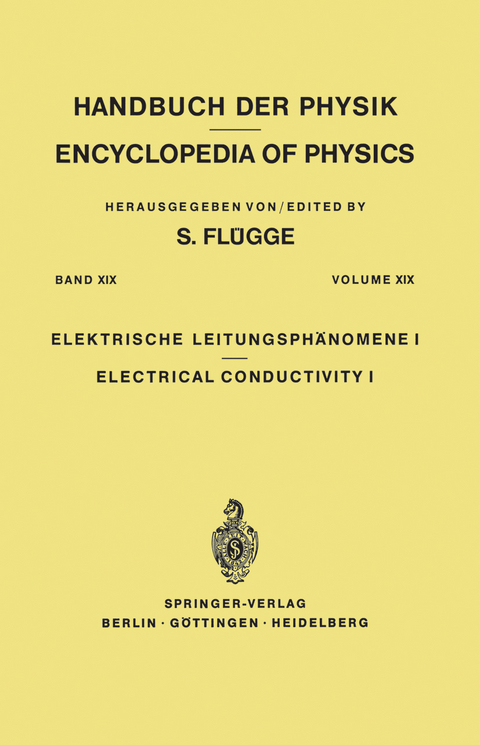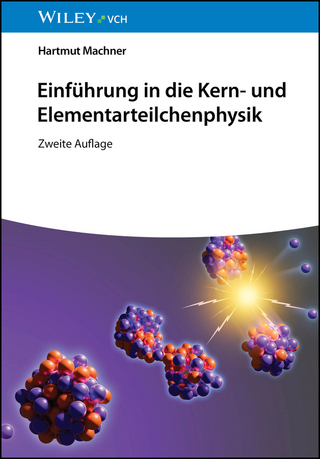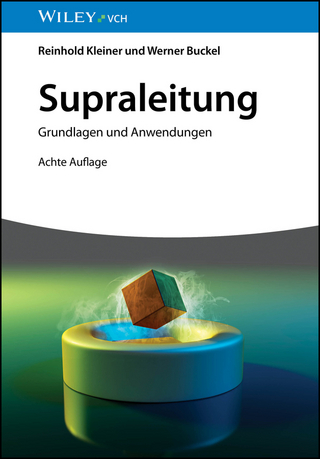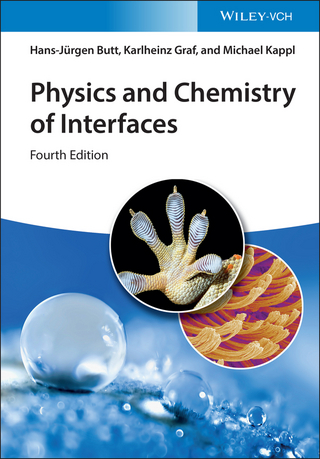
Electrical Conductivity I / Elektrische Leitungsphänomene I
Springer Berlin (Verlag)
978-3-642-62041-6 (ISBN)
The electronic structure of solids.- I. The periodic potential problem: General properties.- II. The periodic potential problem: Methods and results.- III. The self-consistent field.- IV. One-electron theory of properties of solids.- V. Impurity atoms and alloys.- VI. Crystalline binding energy, correlation and elastic properties.- VII. Configuration interaction and the covalent bond.- VIII. Magnetic properties of solids.- Metallic conductivity, experimental part.- I. General remarks on the conductivity of metals.- II. Methods of measurement of electrical resistance.- III. The conductivity of pure metals at normal temperatures.- IV. Temperature dependence of the conductivity of pure metals.- V. Magneto resistance effects.- VI. The effect of pressure on the resistivity.- VII. Influence of lattice defects on the resistance.- VIII. Resistivity of alloys.- Theory of electrical and thermal conductivity in metals.- I. The properties of conduction electrons in metals.- II. Statistical theory; the steady state equation.- III. Wave mechanics of the scattering of electrons.- IV. The conductivity of impure metals and alloys.- V. Thermal and electric conduction in the presence of a temperature gradient.- VI. Conduction at low temperatures.- VII. Conduction in the presence of a magnetic field.- VIII. The anomalous skin effect.- General References.- Photoconductivity.- I. Introduction.- II. Modern theories of photoconduction in crystals.- III. Photoconductivity in monatomic solids.- IV. Photoconductivity in binary compounds.- V. Photoconductivity in organic systems.- VI. A note on the photodielectric effect in solids.- VII. Some experimental techniques in photoconduction measurements.- Sachverzeichnis (Deutsch-Englisch).- Subject Index (English-German).
| Erscheint lt. Verlag | 12.10.2011 |
|---|---|
| Reihe/Serie | Elektrisches und magnetisches Verhalten der Materie / Electric and Magnetic Behavior of Matter | Handbuch der Physik Encyclopedia of Physics |
| Zusatzinfo | VI, 411 p. |
| Verlagsort | Berlin |
| Sprache | englisch |
| Maße | 155 x 235 mm |
| Gewicht | 640 g |
| Themenwelt | Naturwissenschaften ► Physik / Astronomie ► Atom- / Kern- / Molekularphysik |
| Naturwissenschaften ► Physik / Astronomie ► Festkörperphysik | |
| Naturwissenschaften ► Physik / Astronomie ► Thermodynamik | |
| Schlagworte | Conductivity • Elektrische Leitung |
| ISBN-10 | 3-642-62041-8 / 3642620418 |
| ISBN-13 | 978-3-642-62041-6 / 9783642620416 |
| Zustand | Neuware |
| Informationen gemäß Produktsicherheitsverordnung (GPSR) | |
| Haben Sie eine Frage zum Produkt? |
aus dem Bereich


